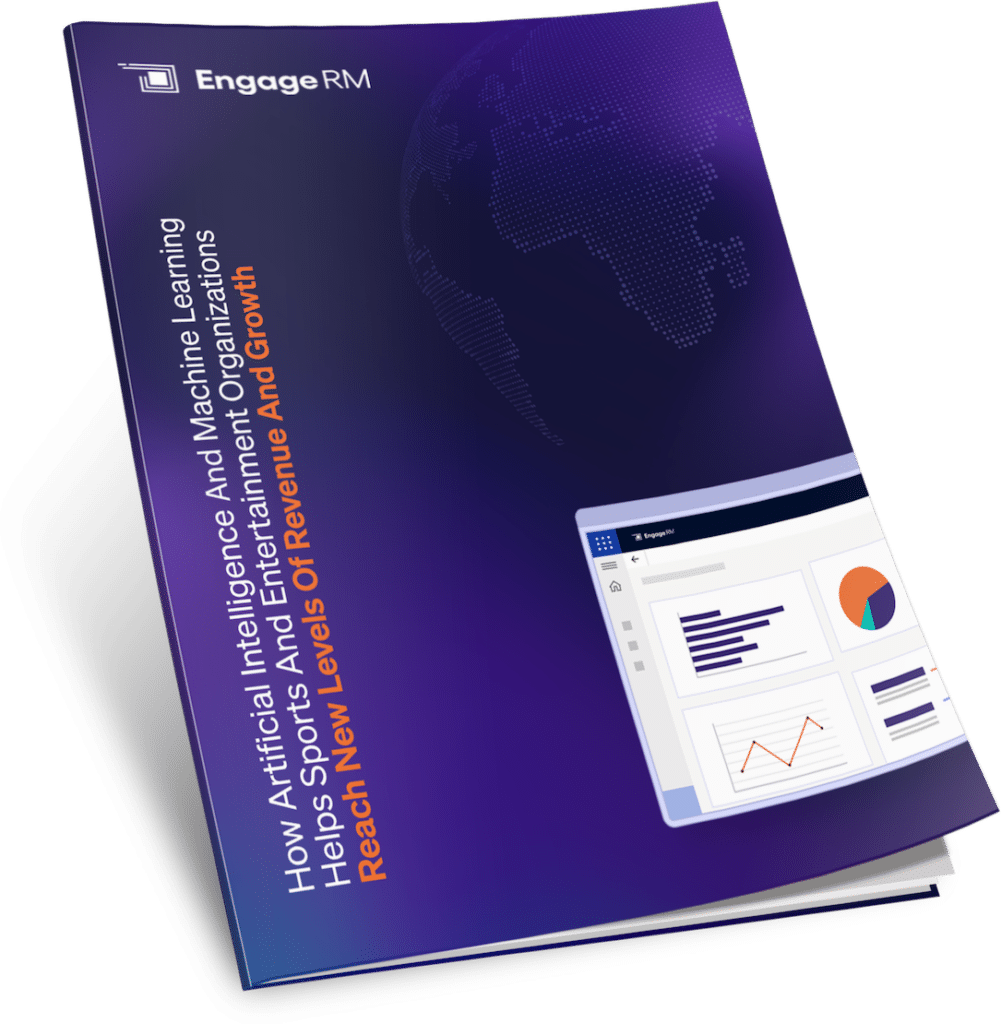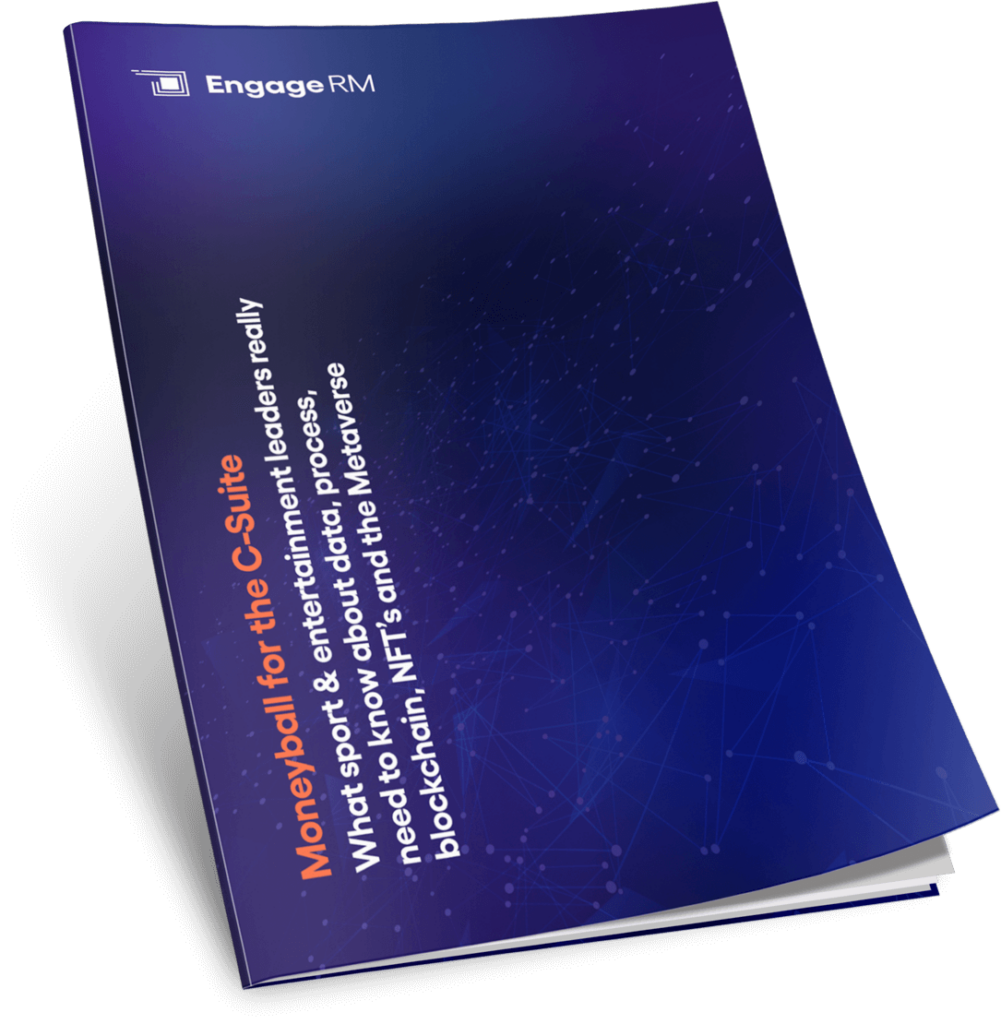The Impact of EngageRM
19 October 2020
Brett Yorgey founded EngageRM, then known as Jaythom, over 20 years ago. Since 2003, when the business became a Microsoft Partner for the first time, we’ve gone from strength to strength, with many twists and turns along the way.
In this three part interview series, we asked Brett about the journey, how EngageRM has made an impact in organizations and what the future looks like.
Here’s Part 2 – How does EngageRM impact the market?
How does EngageRM drive corporate outcomes
The areas of corporate cover off on corporate hospitality, ticket sales, suite sales, digital assets where you’ve got the partnerships team looking after a range of assets as part of a partner program. This is captured from various sources – through an internal sales process, a web portal or partner program where renewals become really important. After business development, there’s sales, followed by account management. Within account management you have all the fulfillment processes that go on with a partner program.
What’s a ticketing environment look like globally and how does EngageRM play in that space?
We bring a new dimension to ticketing at the corporate level. We can allow the club to brand tickets specific to what they want. With the phase we’re going through now with COVID, we’re finding that everyone wants mobile ticketing, customers want no touch and QR codes. That feature is available to all our customers. I think that’s going to bring about a big change into the future of how people interact from a ticketing perspective.
How does EngageRM deal with customer service?
Customer service is a huge area and I think it’s really under-used and under-leveraged in a sports organisation. The tools that we’ve got now can automate and provide consistent feedback in real-time feedback to a client. It’s just not used anywhere near the way that it should be. The amount of resource that could be replaced in doing other things within the organisation is not well understood. I think it’s a focus of ours to make sure that the organization’s start to understand the benefits from it. There’s a real revenue stream that can come to the business.
What events functionality built into EngageRM?
I think what’s really important from a sports environment with events is that you normally have a single person register for an event. That single person might be bringing along a table of eight people to a corporate function or twenty people to a corporate suite. In the past the club or venue would know one person only – the registrant. What we’ve done with our events management system is include the ability to add all of the people that are attending with the client. We can then convert those people into new corporate prospects and automate a whole range of different processes. Updates can be sent before the event via SMS and gameday novelty events like the business card draw or who’s going to kick the first goal can be automatically run. Even auctions during the event can occur because we know who all of the guests are so we can deliver the best experience.
How does a venue or arena use EngageRM?
A venue like the Melbourne Cricket Ground (MCG) has 100,000 seats and 130 corporate suites. We provide the back-end menu management and all the functionality around food and beverage. We also provide the ability for people to log in to a portal, order their food and beverage, as well as order additional food items through that process. The artificial intelligence (AI) we deploy knows that if someone purchases a certain bottle of wine then we should be offering a certain type of food. If they buy this type of food, we should be offering this type of wine, and so on. In the past this was ad hoc and static environment with no interaction – now we are dynamic by leveraging the AI platform of Microsoft.
Can you talk about the customer journey and how that’s relevant to any size organisation?
We have a concept of ‘cradle to grave’. What we’re trying to do is engage someone at an early age and have them participate through their life. Kids in a clinic might go through to become an elite player. They might go through to become a sponsor. They might be a corporate client. But the journey will be the same all the way through and then at the end of the journey, we might even hit them up for some requests. It’s that start to the end that we’re trying to work on.
Can you explain EngageRM’s community functionality.
Community is an area that we have added over the last 5 years. It really does focus on the ability to start capturing people from an early age and have them start their journey – that whole ‘cradle to grave’ journey. By managing things like school programs, it’s possible to understand not only which schools you’re involved with but who the participants are. We ensure we capture all that information so we can then continue that journey with those people from which ever part of the community they’re from. It could be a community group, a sports club, a school, or anywhere that these young people are starting to be involved with sport. So, if we know that the person turned up to the science fair or to the kids clinic, then we know how we can deal with that person in the future. We can start to deal with the family in a more holistic way because we know they’re not only buying tickets to games but they come to our community. Therefore, they become a really strong part of our community.
How is artificial intelligence being utilized?
We’ve noticed in the last two years that Microsoft have become the leaders in this area. The artificial intelligence platform in Azure is now driving a whole range of different functions within their ecosystem. The benefit for us is that it’s all through the Dynamics365 platform, the CRM, Finance and Operations and marketing. So, this AI platform is fuelling automation and really is going to be the way of the future. We know from conversations that this is going to continue to be a focus at Microsoft.
What’s the benefit for sports organizations in using artificial intelligence?
AI automates journeys based on experience and data that is learned, rather than having to go in and build the journey for every scenario. You can have these campaigns in place with automation behind them and it can then leverage its learnings to orchestrate the experience. From a resource perspective, you don’t have a department of 20 people in marketing to be able to run a really powerful campaign. We have a ‘low code / no code environment’ that allows these things to be built really simply. So, it’s giving smaller organizations the ability to do what larger organizations have been doing for a while.
Read Part 3









